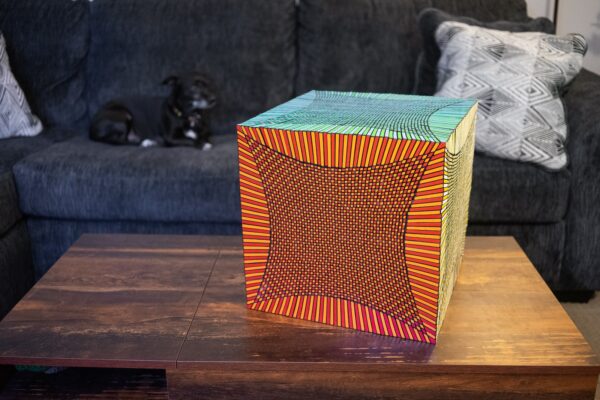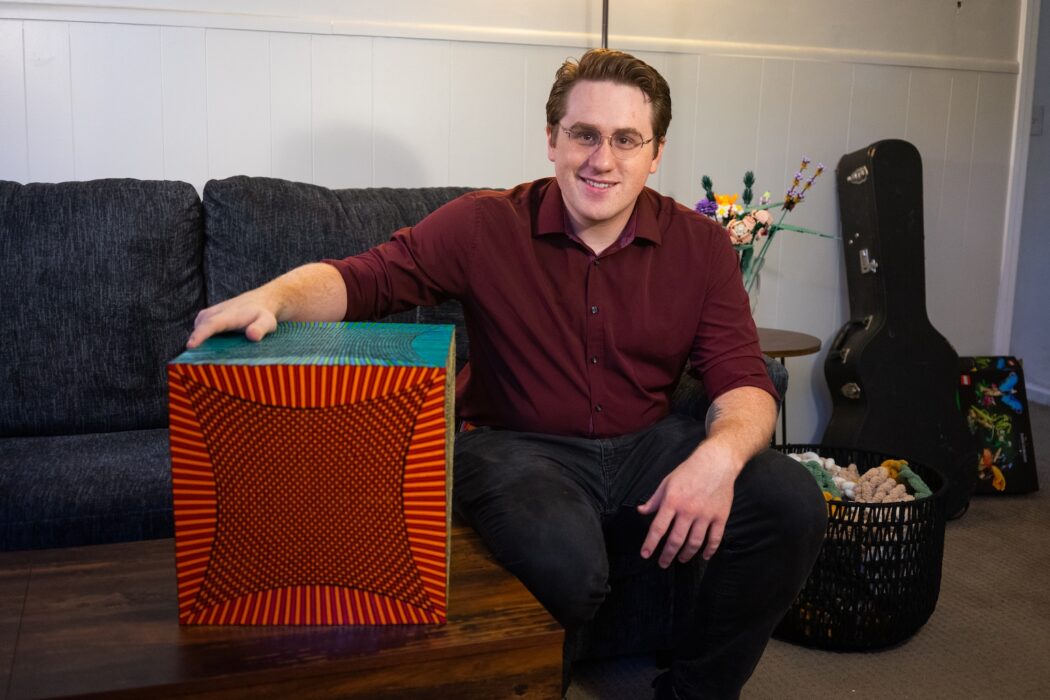Q&A: Rubik’s master
Preston Alden graduated from USU in the spring of 2024 with a degree in mechanical engineering. Five years ago, he began working on the designs for the world’s largest Rubik’s Cube. Made out of 13,827 pieces, Alden derived the cutting patterns himself and virtually designed the cube in SolidWorks. Alden spoke to The Utah Statesman about his experience in this process.
According to Alden, the largest cube ever built was a 33x33x33 Rubik’s cube by Greogoire Pfennig of France who currently holds the Guiness World Record. Alden’s Rubik’s cube measures 49x49x49.
Statesman: How did you begin the process of building the cube?
Alden: I looked up a ton of tutorials on how to design a Rubik’s Cube and how it works. I didn’t really know much at the time.
Q: What did you have to revise about your designs?
A: I had about five variations, and each one took me longer. I was adding in more and more detail, learning from each iteration. I was originally thinking of making it with straight cuts, but in the end, I decided to go with this curvy look.
Q: What challenges did you face when taking on this project?
A: It’s actually impossible to do this in a way where all the cubes are the same square size. Once you get past a 7×7, it has to kind of get distorted because you don’t want to cut off the corner.
Q: How long did it take to print the materials for the cube?
A: It required 11 and a half months of printing if it had been printed continuously, so I bought four printers so I could have all four printers running at once. It took me about three months of continuous printing.
Q: What was the biggest challenge when you were constructing the cube?
A: You’re forced to make, at minimum, the center edge piece at least 15% of the cube’s height. The inner pieces get smaller, and the outmost pieces get bigger.
Q: How did you approach the design process?
A: I chose to do it differently. I was going off previous records and their designs, where they were using a pattern of two pieces to the side and one in the middle and you go up, and that’s a binary mechanism. It was creating a place with no tolerance, where it just squeezed too hard.
Q: How does a Rubik’s Cube work?
A: Only the center pieces are bolted to the core. The way that a Rubik’s Cube works is that the pieces are just stuck under each other, so they can’t move outward, but they can twist.
Q: What did you not expect to take a lot of time?
A: The entire project was extremely tedious but very rewarding in the end. There were so many small aspects, like rounding the corners of the edges — that took me over 30 hours.
Q: What role did your engineering background play in this process?
A: This was a passion project. When I was studying engineering, it was complimentary to the skill set, but it was something I enjoyed doing. In the end, all you have to do is cut a solid with a surface, and as long as you cut it along that surface, it will twist around it. I found the process of designing Rubik’s Cubes to be amazingly simple.

Preston Alden’s homemade Rubik’s cube sits on his living room table with an impressive 49 by 49 grid.

